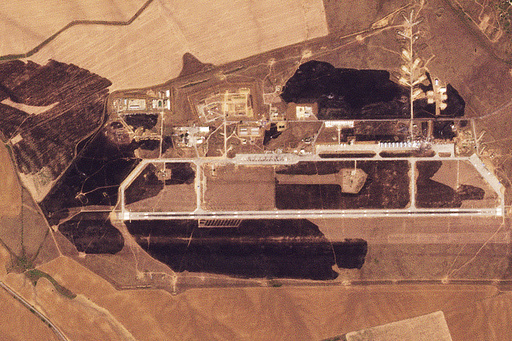Ukraine’s military recently disclosed that they employed high-precision glide bombs provided by the United States to conduct strikes in Russia’s Kursk region. Additionally, they claimed to have regained control over some territory in the eastern region of Kharkiv, where Russia had initiated an offensive earlier in the year. Air Force Commander Lt. Gen. Mykola Oleschuk released a video showcasing an attack on a Russian platoon base in the Kursk region using GBU-39 bombs, resulting in casualties and equipment destruction. Ukrainian forces from the 3rd Separate Assault Brigade advanced nearly two square kilometers in the Kharkiv region, although specifics regarding the offensive’s timing, scale, and area remain undisclosed, making it challenging to assess its impact on the battlefield.
Ukraine’s military recently received delayed shipments of U.S. weaponry, which enabled them to initiate a surprise offensive into Russia’s western Kursk region on August 6. Simultaneously, they intensified drone attacks on military and fuel targets deep in Russia, causing significant damage and injuries. An aerial assault by a Ukrainian drone on a Russian air base in the Volgograd region resulted in extensive damage to an airfield reportedly storing glide bombs used by Moscow. In a separate incident, an attack on a cargo ferry in Russia’s Krasnodar region caused injuries to 13 individuals, with four hospitalized and one missing.
These recent military advancements by Ukraine have transformed the battlefield and bolstered Ukrainian morale a decade after Russia’s initial invasion and 2 1/2 years post Moscow’s full-scale invasion, which led to significant devastation and a major refugee crisis in Europe. There is optimism among Ukraine and its Western allies that these gains could enhance Kyiv’s position on the diplomatic front. Indian Prime Minister Narendra Modi’s visit to Kyiv to meet with President Volodymyr Zelenskyy is being closely monitored, with hopes that Modi’s influence, given his relationship with Russian President Vladimir Putin, could aid in facilitating a mediated peace process.
The incursion into Russia has exposed vulnerabilities within the Russian defense, yet it has also extended Ukrainian forces, straining their capacity as they are already engaged in prolonged frontline battles spanning hundreds of kilometers. This increased pressure potentially hampers Ukraine’s ability to contain Russian advancements in the Donetsk region, as Ukrainian forces are redirected from reinforcing defenses in that area. The extent to which Ukraine can retain control over the captured territory in Russia remains uncertain.
Reports from the Russian Defense Ministry on Friday indicated successful repulsion of Ukrainian advances in the Kursk region’s villages of Borki and Malaya Loknya. The ministry also reported neutralizing a reconnaissance and sabotage group near Kamyshevka, 20 kilometers north of Sudzha, which had been taken by Ukrainian forces. The 3rd Separate Assault Brigade of Ukraine declared in a statement that they seized an area previously controlled by a Russian battalion, eliminating some strongholds in the process. Despite these claims, their accuracy could not be independently verified, and there was no immediate response from Russia.
In May, Russia initiated an offensive in the Kharkiv region, achieving initial gains that later stalled. Following this, the focus of Russian military efforts shifted to Donetsk in the industrial Donbas region, which Moscow formally annexed but hasn’t completely controlled. The advance on Kharkiv earlier in the year was seen as a reflection of Ukraine’s weakened position due to delays in Western military aid.



